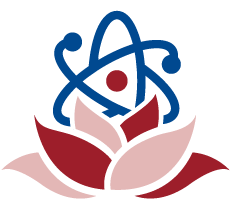Introduction
The six-year ETSI physics program aims to make the fundamental concepts of physics accessible to monastic students who, although they have little prior training in natural science and mathematics, nevertheless have many years of training in Buddhist philosophy, logic and debate.
Text Materials
The six-year program started in the summer of 2014 with a Year-1 Course. This course provided an overview of physics topics to be covered in the following years. A text for this course was prepared by our monastic science scholars.
The Year-1 Course is particularly important in that its goal is to give a brief and enticing introduction to the scientific principles to be covered in the subsequent five years of study. It is hoped that this course will be a strong motivation for the Tibetan monastics to continue to study and think about physics on their own.
Each subsequent year, for five years, a new course is added to the program.
The Year-2, 3, 4 and 5 courses are based on Paul Hewitt’s Conceptual Physics, 11th Ed, with the material in this text divided into four sections, each of which is translated into Tibetan. The Year-6 course will be devoted to astronomy and cosmology, and the text for this will be developed independently.
These texts are supplemented by other text materials, and video lectures recorded by physics faculty.
In the summer of 2018 we will be teaching the Year-1, -2,- 3,-4 and -5 courses.
Teaching Protocol
Text materials and video lectures are sent to the monasteries before the start of the summer lectures. The monastic students study these materials, under the guidance of local science teachers and former Emory Monk Scholars. During the summer courses it is hoped that faculty can devote their time to clarifying concepts through lectures, discussions, demonstrations, hands-on activities, and problem solving.
The responsibility for teaching each course is shared by two physics faculty, who are aided by Tibetan translators and former Emory Monk-Scholars. The lectures and discussions between the students and the faculty involve translations between English and Tibetan; our experience is that this scheme works very well, and does so because of the excellence of the translators and the dedication of the students.
Lectures can be given using a White Board and PowerPoint, or combinations of the two. The computer used for PowerPoint projection has internet access.
The material for each day is divided into three or four 90-minute lectures. The two faculty assigned to each course can decide how they want to divide the duties and topics for their lectures. We have found that morning lectures combined with afternoon demonstrations and problem sessions work well. The monks are used to working in groups, and demonstrations and problem solving sessions that lend themselves to small groups are encouraged.
Math Background
The students have, in general, a very limited background in mathematics. Faculty cannot assume algebraic or trigonometric knowledge when giving their lectures; such knowledge will therefore have to be developed as needed. As an example, a large fraction of the Year-1 students will not be familiar with an “=” sign.
Testing
Each course has a standardized final exam. This exam will be available to faculty as an aid in developing their lectures.
